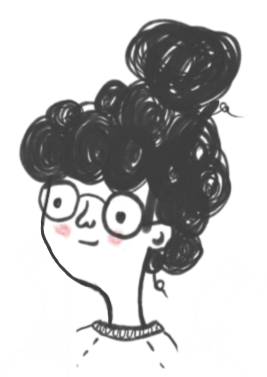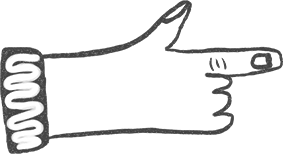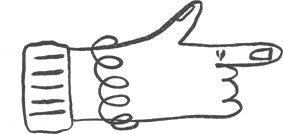CCT Digital Skills Project
CCT (The Career Colleges Trust) works with students, teachers and mentors preparing young people for careers by focusing on project-based learning, digital transformation and employer involvement. CCT works closely with big tech brands like AWS or Accenture to help develop the curriculum, so students who comes from disadvantaged backgrounds level up education with the necessary skills. Opportunity to work on a project that simulates work environment and serves a good cause.
The process is led by CCT, however a lot of support is required from schools and teachers. CCT is a charity that operates within the Further Education Sector – focusing mainly on 16-19 year olds. Julia, who represented the Digital Skills sector, works with young people to prepare them for a career in the IT Industry.
- Information Strategy
- Research
- Service Design
Time
3 months (10-12 h per person a week)
Team
Daniel (Design Lead), Chomparani, Cazz, Ami, Agi (Me)
Challenge
The Challenge was to encourage young female students to take part in the program. Optimise workload and move Digital Skills Module to another level. Currently most of the alumni are male students, and females are just a small percentage of participants. While we worked on the project we found out about AWS withdrawing their support from CCT. At first, we knew we needed to focus on the inequality aspect, but along the way our brief became a bit wider and more complex, so we had to consider more issues and optimise the workload. We focused on disparity, but we got a second important issue to tackle. How to optimally support program leaders and teachers, so they aren’t overworked anymore while students feel supported and guided.
Prep for stakeholder Interviews
After the brief analysis we organised a Brainstorming and formalised a set of questions that could help us to understand the task better, identify gaps and understand how we can move forward in the best way possible. We all wrote down gaps that we thought of and tried to find a theme. Next we moved to desk research and eventually formulated a Discussion Guide for Stakeholders.
After interviewing our stakeholders we could connect more dots, and we knew that we needed to dig into students’ experience. Shortly after our first interview with Julia we got unfortunate info about AWS withdrawal of financial support due to Tech market crunch. We conducted another stakeholder interview to get a bit more insights and to understand the severity of the issue. Equipped with more knowledge and assurance that Julia will find other sponsors we moved ahead with our project. We conducted a series of interviews with recent graduates – a few girls and boys – to get a better understanding of this complex landscape. In the first round we interviewed only students that were successful and either found jobs (which were a direct results of successful project participation) or were awarded with apprenticeship.
Research Goals / Questions addressed
After the first batch of interviews we formulated Research Objectives, Goals and created a Research Plan. They were a good base for the second, more challenging, round of interviews. We wanted to hear the perspective of ppl who either didn’t have the best experience or didn’t finish the project. The objective was to extend our knowledge and to understand Students better. Especially their motivations to engage in vocational digital skills programs and particularly what are the blockers to female participants.
After this batch of interviews we created a short survey:
• How are students finding out about the project?
• What parts of the project are the scariest?
• Do they have the right amount of support?
• What is most important for them?
• What students value the most about the project?
Julia passed it on to the students at live sessions that took place at the time. It allowed us to evaluate our initial assumptions and findings from the interviews.
Triangulation of data – prep for Mentors and Program Leads Interviews
After we gained some knowledge on how process works from Julias and Students perspective, we wanted to hear Teachers and program Leads take on the program. To do that we asked them those questions:
• Is it possible to give equal attention to all students?
• How engaged are the students when you meet them? Does it vary?
• What’s the level of knowledge like among students you meet?
- Do you think they’re getting enough from their course/outside of project work?
• What are your perceptions about how women students engage in the program?
• How are students’ expectations managed when they sign-up to the project?
• Are they ‘recruited’ onto the project on the basis of increased employability in-sector only or is it more general?
• Can you run through, as you see it, the steps a student goes through from hearing about signing up to … to finishing the project.
We found out more about the recruitment process and confirmed assumptions that we had after students interviews: Students who come into the project for the second time are more comfortable, while students that take the course for the first time are not really aware of what they are getting themselves into.
From all gathered insights we could slowly move from discovery to definition faze.
Core personas
We identified two main Characteristics. First “Alex”, a persona who runs for the second time. She is more aware of what to expect and feels more comfortable in the process. Second persona was “Lexie” who is a first-time runner and is a bit more cautious and apprehensive about the project. This differentiation was very prominent in our interviews. Students that came back for a second round were more confident and outspoken.
Current Journey from student perspective
Restrained by the time we could only identify one path, so we decided to focus on “Lexie”. As first-time students had more problems with adaptation to the process, we prioritised their needs and focused mainly on their path.
We were able to identify main periods in the process where students had swings of emotions, felt insecure or (some of them) even dropped out. We dissected the process to smaller chunks and linked emotions that accompanied students with potential opportunities that could help them feel more relaxed and prepared. Link to figma files
We discovered that a lot of young ppl, especially females, are doubting their abilities from the beginning. First doubts accrue when students start to think about the course. Second big tumble happens when team formation starts and (for most of them) group work proves hard. We identified some opportunities to resolve the tension and provide a bit more guidance to students that have no concept of what they are signing up for.
Problem Statement – Opportunity Framing
After analysis and gathering all information into a Journey Map we decided to put more effort into touch points that we identify as difficult for Students. We used 4 Ws: “Our (who) has the problem that (what) when (where). Our solution should deliver (why).”
Link to Figma
• Start of the journey. Currently students can only hear about the opportunity from teachers. We can change it by providing some printed materials to hang around the school and organising Q&A sessions, preferably with female alumni.
• During the course. New participants do not know what to expect exactly. We can provide them with more details on what awaits them in coming days, so they feel more comfortable.
After that we moved to creation of alternative / improved scenarios. Where we could take into consideration the opportunities and pain points that we discovered. The team split into two smaller teams, so we could tackle more issues at the same time. Me and Chomparani took on the subject of girls to boys ratio among participants. Second subject was about bridging the gap of confidence and knowledge between new and returning students. We created an improved scenario where we visualise how the new process can look like.
Customer persona:
LEXIE (Cautious collaborator)
Scenario: “Lexie” is on a digital skills course at college. She’s thinking about taking part in the AWS project to help her develop skills and experience for the future workplace, but is unsure about what it entails.
We called our part: “Help me get relevant information about every step of the project”. For our presentation with stakeholders we used AI generated illustrations for storyboards that could help us visualise all the steps and convey the message and journey a bit better.
With storyboard we also presented examples of email mockups, high fidelity blog wireframes, webpage and YouTube content. We know that Julia has all that content already, but it is scattered across different platforms.
• We provided mockups to visualise the effort and amount of work needed.
• We suggested using tools that can help automise the process, email communication and well structured website can help reduce amount of queries and raise awareness.
• CTT wants to involve more female students. We propose more streams to advertise the projects (using social media, poster campaign). Currently students are finding out about the project mostly from teachers or Julia. We proposed to organise a Q&A sessions with alumnae as speakers, this could raise awareness about the project and encourage more girls to participate.
• Amy and Cazz prepared supporting session guide on inclusion and communication for students, that aim to raise awareness about women in IT.
• We propose to get a special mentor program dedicated for Project Manager roles as this proves to be the most difficult part.
• We proposed sending an information email ahead of every project milestone. Email would contain: information what participants can expect next, videos, testimonials, ready to use assets and tutorials. Starting with an email ‘Welcome Packs’ with information what students can expect after qualifications.
• We suggested a lot of interactive content, so young ppl can quickly look through it. We wanted to bridge that gap between returning students and first-timers. Difference between those two cases was obvious. Second-timers felt more at ease, while students with no experience felt insecure very often and needed more attention.
We passed all the assets to Julia. Daniel will continue our project with the next group of students.


